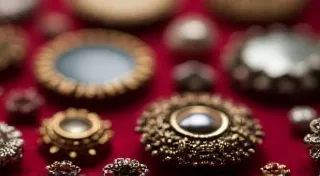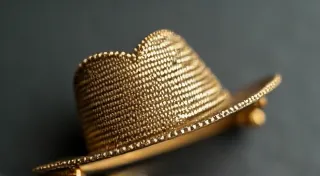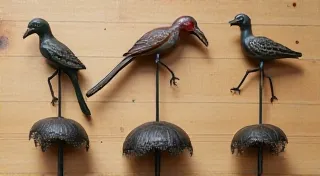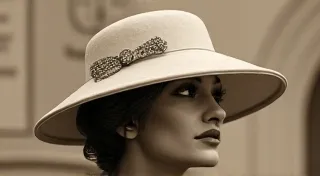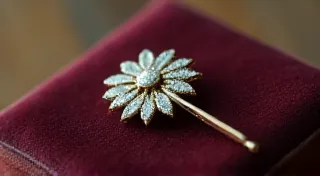A Beginner's Guide to Identifying Antique Hat Pins
Welcome to the fascinating world of antique hat pins! These delicate and often intricate accessories were essential for fashionable women from the late 19th century through the 1920s. Collecting them can be incredibly rewarding, but it also requires a bit of knowledge. This guide will provide you with the fundamental aspects of recognizing antique hat pins, covering materials, manufacturing techniques, and common hallmarks. Let's begin!
What Exactly *Is* a Hat Pin?
Simply put, a hat pin is a decorative pin used to adorn hats. During the Victorian and Edwardian eras, hats were a critical fashion statement, and hat pins served both a functional (securing the hat) and aesthetic purpose. They ranged from simple, elegant designs to elaborate creations featuring precious stones, enamel, and intricate metalwork. The sheer variety of designs available can be overwhelming to a new collector, and understanding the historical context of these accessories is key to appreciating their value and significance.
Materials: Clues to Age & Origin
The materials used in hat pins offer vital clues to their age and potential origin. Here's a breakdown of common materials and what they suggest:
- Base Metals: Many hat pins began life as steel or brass. These are often plated with other metals like silver or gold. Look for signs of wear through the plating to reveal the underlying base metal. The base metal itself is often less important than the applied decorative layer, but knowing what's underneath can offer insights into the pin's construction and potential value.
- Gold Filled: Gold-filled hat pins have a thick layer of gold bonded to a base metal. They've a higher gold content than plated pins and are more durable. This method of applying gold was a popular compromise for those seeking the look of gold without the higher cost.
- Sterling Silver: Solid sterling silver hat pins are relatively common, especially in the early 20th century. Look for hallmarks (see "Hallmarks" section below). The clarity and quality of the silver used can vary considerably, and collectors often look for well-preserved hallmarks as indicators of quality.
- Gold: Solid gold hat pins are rarer and more valuable. The karat of the gold (14K, 18K, etc.) is a crucial factor in determining its intrinsic value.
- Glass & Enamel: Colorful glass beads and enamel detailing were frequently used. Observe the quality of the glass – older glass often has tiny imperfections. The bubbles and slight variations in color are often a sign of hand-crafted glass.
- Gemstones & Semi-Precious Stones: Hat pins might feature glass paste (imitation gemstones), as well as genuine stones like garnets, amethysts, and pearls. Distinguishing between genuine gemstones and paste can sometimes be challenging and requires practice and experience.
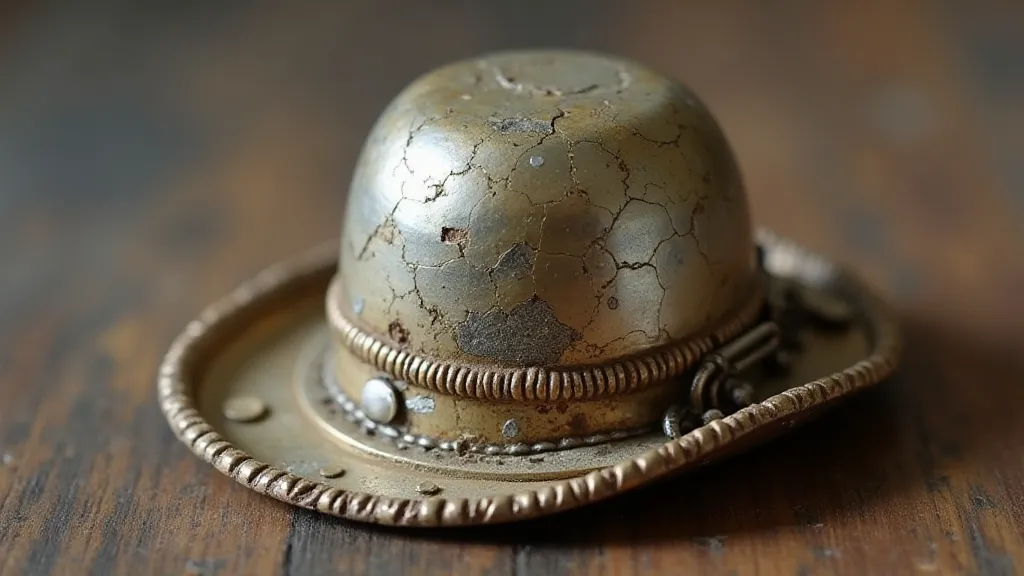
Manufacturing Techniques: Spotting the Era
Different eras favored different manufacturing techniques. Understanding these can help date your hat pin.
- Handcrafted: Victorian era hat pins were often painstakingly handcrafted, showcasing intricate details and unique imperfections. These imperfections are not flaws, but rather marks of the artisan's skill and care.
- Die-Struck: As manufacturing processes improved, die-stamping became more common in the Edwardian period and later. Die-struck pins often show a higher degree of uniformity. This shift towards mass production reflects broader industrial changes of the time.
- Machine-Made Beads: Early beads were often hand-applied; later, machine-made beads became the norm, exhibiting consistent size and shape. This also contributed to a more standardized aesthetic in hat pin design.
Hallmarks: A Guide to Identification
Hallmarks are small markings stamped onto the metal, indicating the metal content, maker’s mark, and sometimes the year of production. While not all hat pins were marked, the presence of a hallmark can be a significant clue. Understanding these marks and what they signify is a key skill for any serious collector. For those who are new to the hobby, building a valuable collection can feel daunting, but focusing on learning to identify hallmarks is an excellent starting point.
- Sterling Silver Hallmarks: Look for marks indicating "Sterling," "925," or a lion passant (British hallmark).
- Gold Hallmarks: Marks might indicate the karat of gold (e.g., "14K," "18K").
- Maker’s Marks: These identify the manufacturer and can help track down more information about the hat pin’s origin. Researching maker’s marks can often reveal fascinating stories about the workshops and artisans who created these beautiful objects.
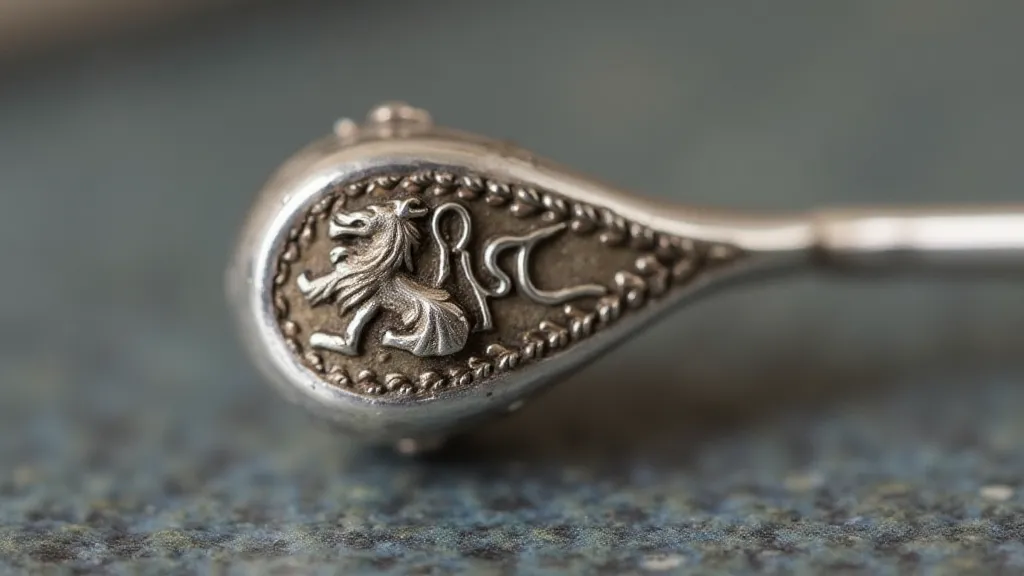
Common Styles and Motifs
The styles and motifs found on antique hat pins reflect the popular aesthetics of the time. Look for:
- Floral Designs: Roses, lilies, and other flowers were extremely popular.
- Figural Representations: Animals (birds, cats, dogs), portraits of women, and mythical creatures.
- Art Nouveau Influences: Sweeping lines, organic shapes, and a sense of movement.
- Military & Patriotic Themes: Especially prevalent during and after World War I. These designs often reflect the societal climate and events of the era.
Delving Deeper: Thematic Collections
Once you're comfortable identifying basic materials and hallmarks, you might be inspired to focus on specific themes within antique hat pin collecting. From whimsical animal designs to intricate floral arrangements, the possibilities are endless. If you are particularly drawn to animal motifs, understanding the symbolism and popularity of specific creatures can enhance your appreciation for these decorative objects. Collecting Specific Themes: Birds, Insects, and More can guide you in exploring specialized collections.
The Shadows of Loss: Mourning Pins
A less joyful, but equally important, aspect of hat pin history revolves around mourning pins. These somber pieces, typically crafted from jet or black glass, were worn to signify grief and remembrance. The Significance of Mourning Hat Pins: Jet and Black Glass explores this fascinating and often overlooked facet of hat pin culture.
Resources for Further Research
Once you're comfortable with the basics, explore these resources:
- Antique Jewelry Books: Many books specialize in antique jewelry, including hat pins.
- Online Forums & Communities: Connect with other collectors and share knowledge.
- Auction Records: Review past auction results to understand the value and rarity of different hat pins. Auction records provide valuable insights into market trends and help determine fair prices for your own collections. Building Collecting Antique Hat Pins: Building a Valuable Collection requires dedication and a solid understanding of market dynamics.
- Understanding Value: Knowing how to assess the worth of different types of antique hat pins is key to both buying and selling. Understanding the Value of Different Types of Antique Hat Pins will guide you through the process.
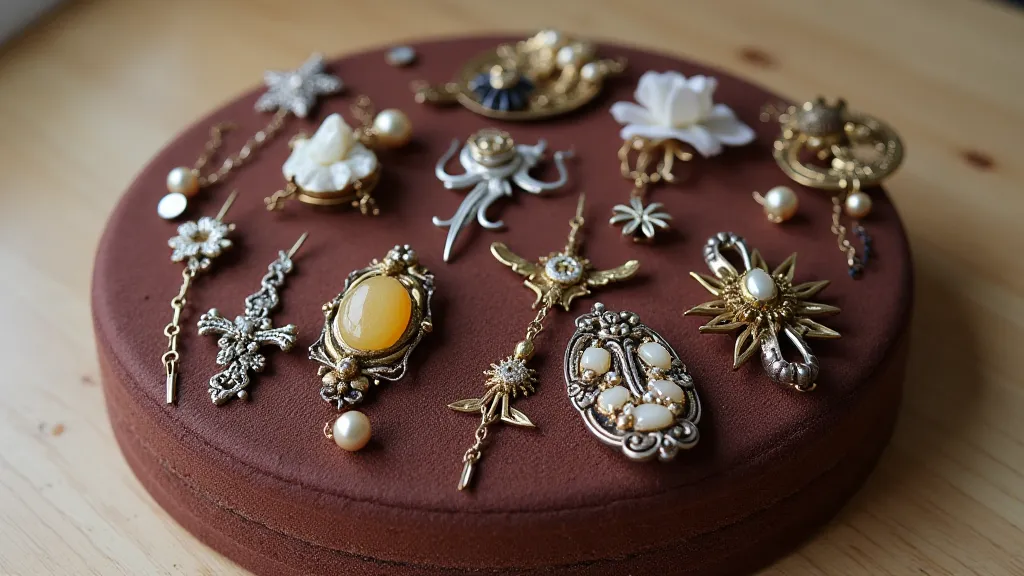
Happy Collecting!
Collecting antique hat pins is a journey of discovery. With a little patience and these fundamental guidelines, you're well on your way to building a fascinating and rewarding collection!

